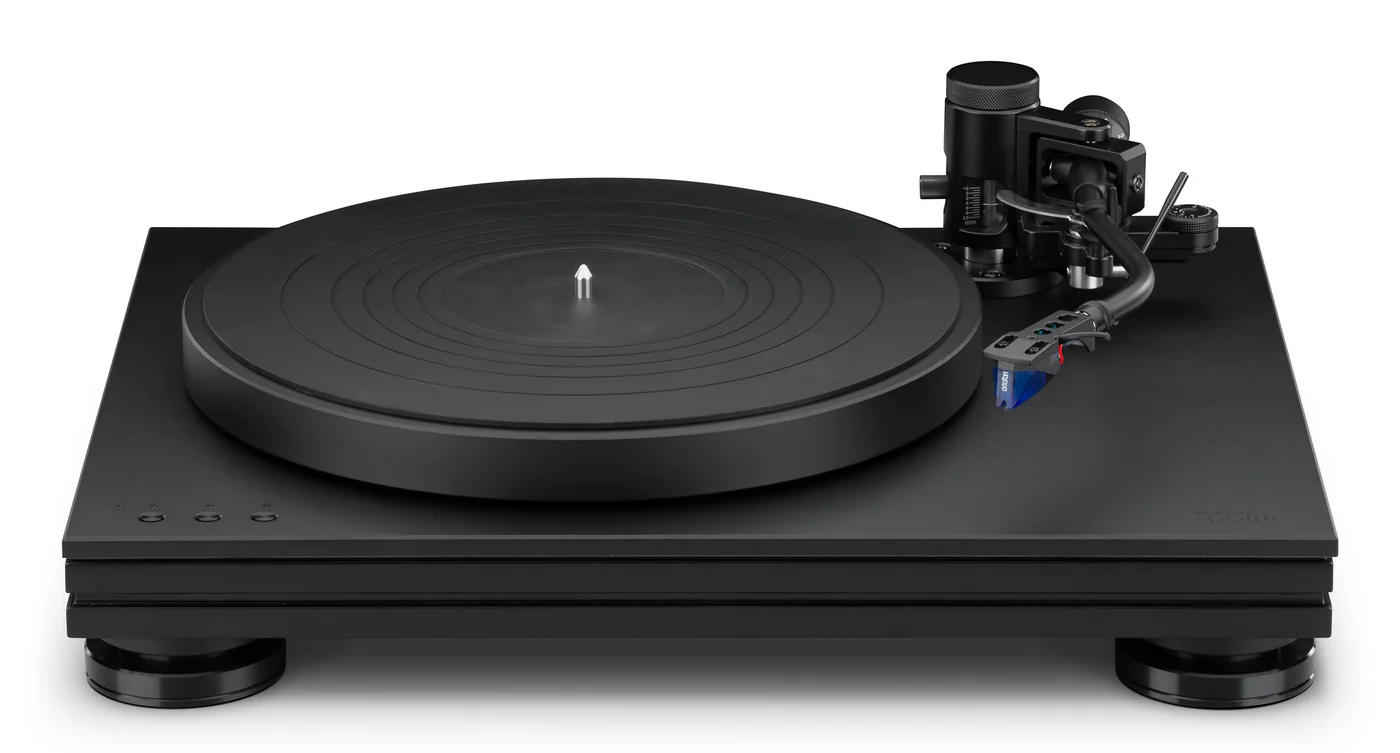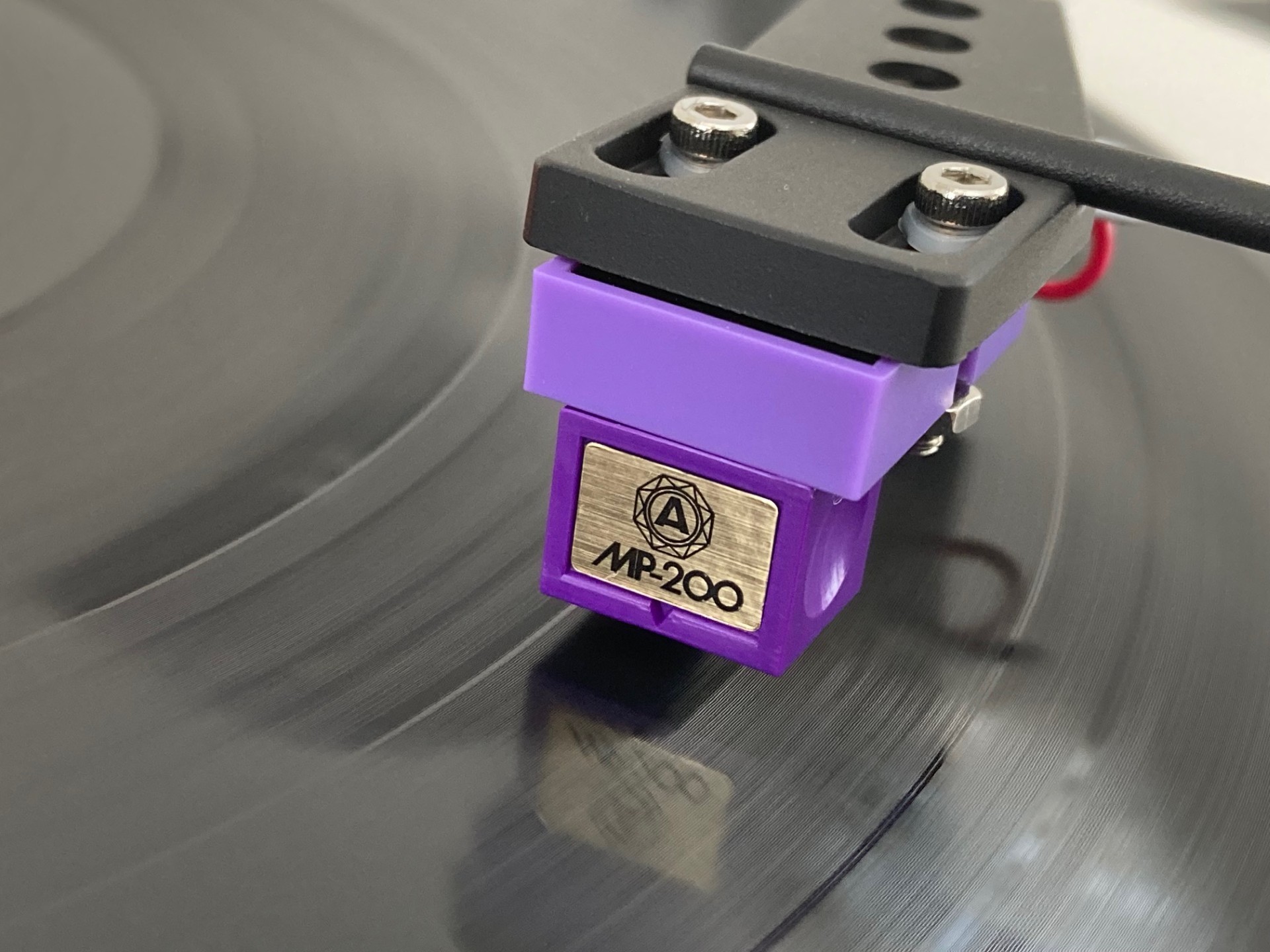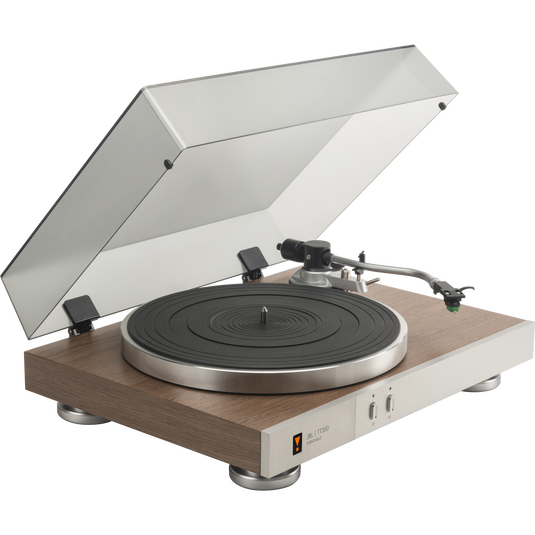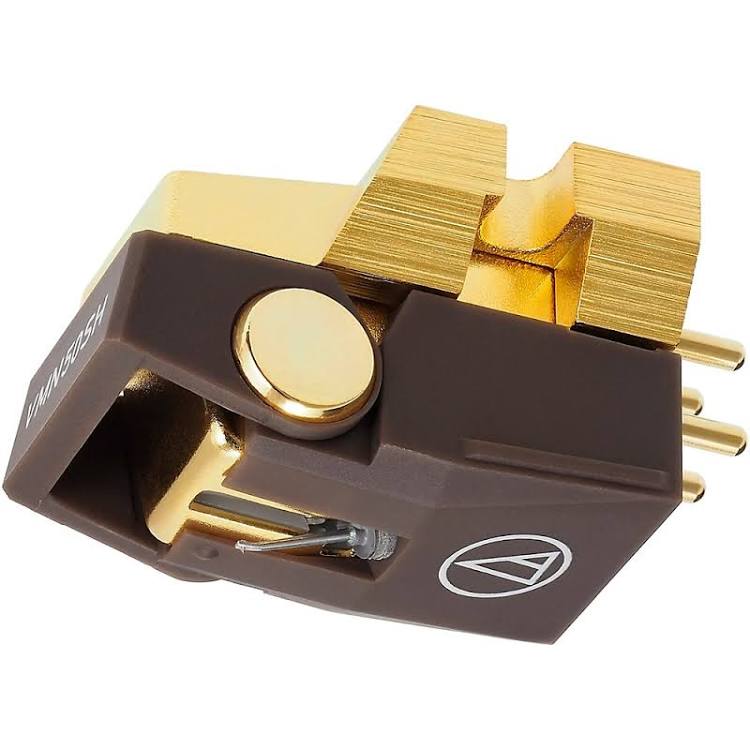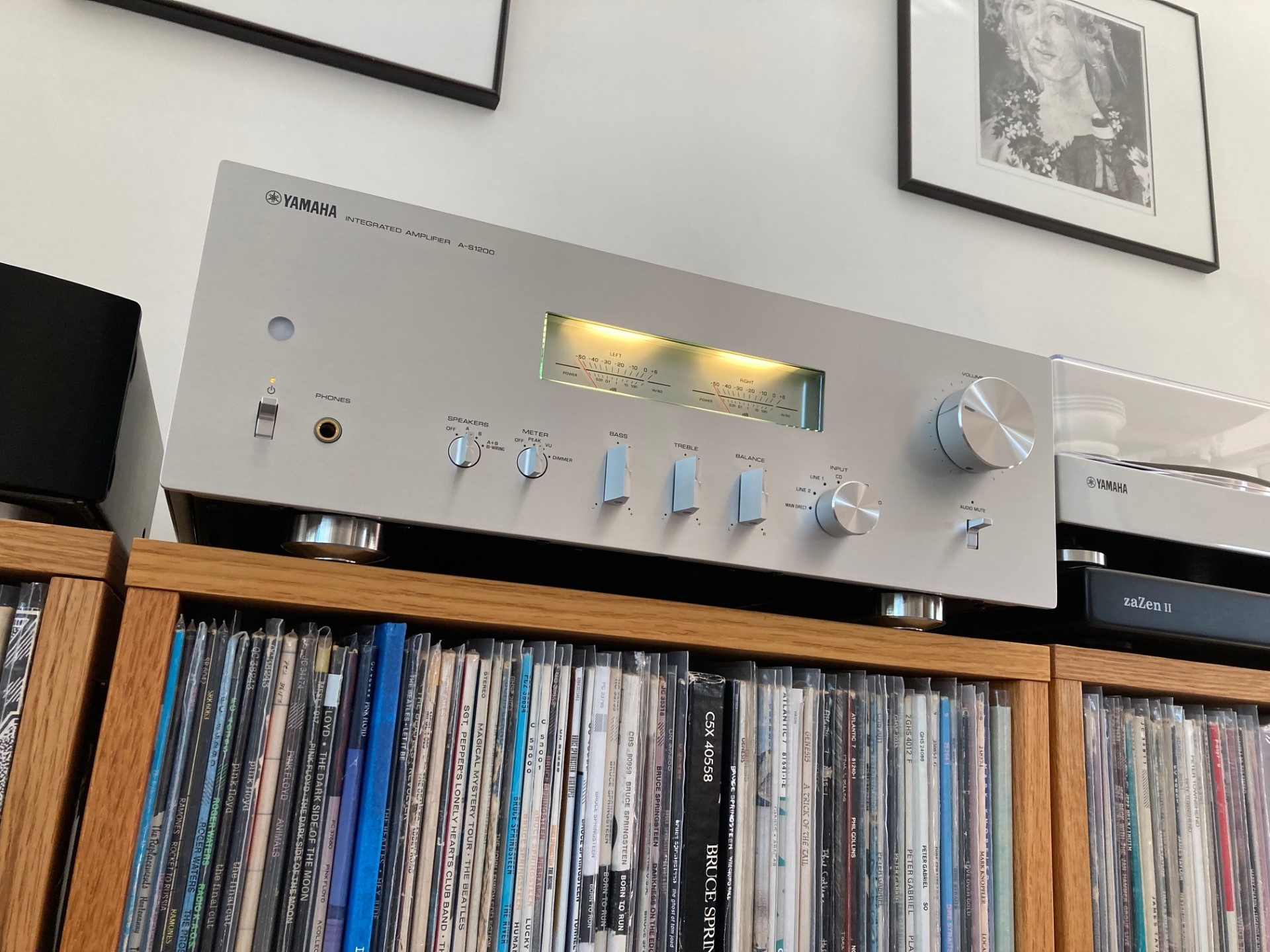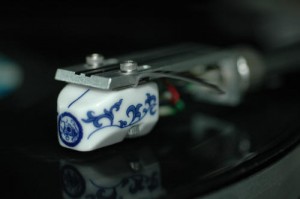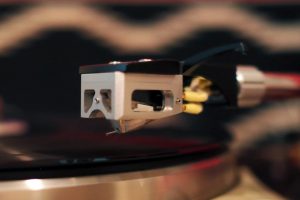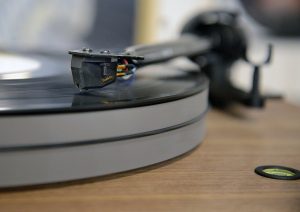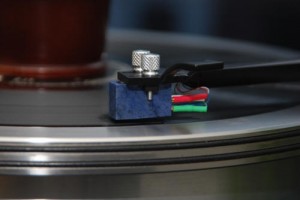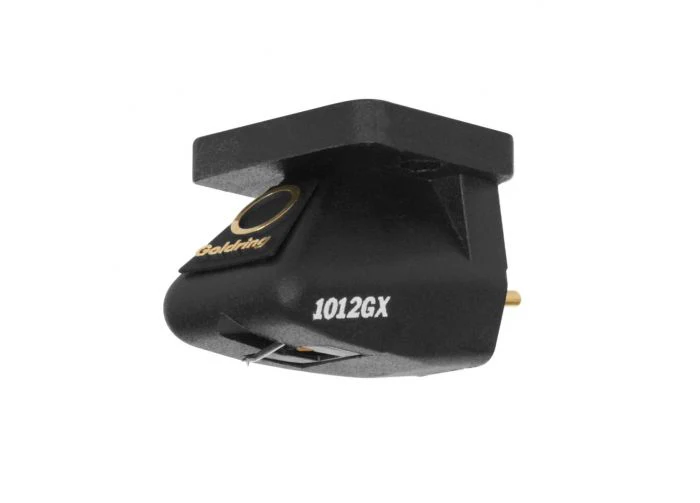
"They're boxy, but they're good." That was the slogan coined for Volvo cars by Dudley Moore's unhinged ad exec in the mediocre 1990 movie farce, Crazy People, which imagined what might happen if marketers started writing painfully honest ads. Regarding Goldring's $549 1012GX, I couldn't help but think along the same lines: looks old fashioned, sounds awesomely modern. After all, the looks of the 1000 series cartridges haven't changed in decades. Though struck from highly rigid Pocan, and sporting fully competitive specs, they look kinda frumpy when mounted on some of today's high-tech tables. When I first encountered the lineup many years ago, I was initially expecting a commensurately old-fashioned British analog sound: tuneful but warm, rich, loose. Wrong! And that's still true today.
Launched in 1985, the 1000 series received a set of improvements in the 1990s as compact discs overtook the physical media market. That's a clue as to why the 1012GX sounds the way it does. With everybody going nuts for digital, Goldring was perhaps striving to keep their customers playing records by giving them a presentation more like what they were experiencing with their bitchin' new silver disc spinners: quiet, clear, dynamic, detailed. I'm guessing, of course, but if that was their intention, they succeeded.
Indeed, after just a few sides, the 1012GX revealed itself as a cartridge that seemingly aspires to digital-like levels of precision. Yet it still sounds pleasantly, unmistakably analog. What could be more relevant and of the moment for the times we live in today, where music lovers have become accustomed to the ever higher resolution of quality streaming services? A lot of those folks won't want to take a backwards step when listening to their records, but they also likely don't want to sacrifice the ease and liquidity that differentiates analog reproduction. Problem solved by, of all things, a cartridge whose basic design dates back to the premiership of Margaret Thatcher.
I've been impressed by Goldring's affordable $189 E3, part of their newer and more modern-looking entry-level series seemingly based on Audio-Technica innards, but, as I found, distinctly different in direct comparison. The only reason I haven't reviewed one is because so many others have, and I struggle to add much. But it awakened a curiosity in me about a brand I had mostly middling experiences with. Their old budget Elan was a kind of a fun but mostly rough-around-the-edges shaggy dog. And back in the day, I tried a top-of-the-line 1042 with the most severe stylus profile in the 1000 series lineup, and found it exceptionally informative but also rather unmoving. What was I missing? Enough people must still be buying the 1000 series cartridges if they're still selling them.
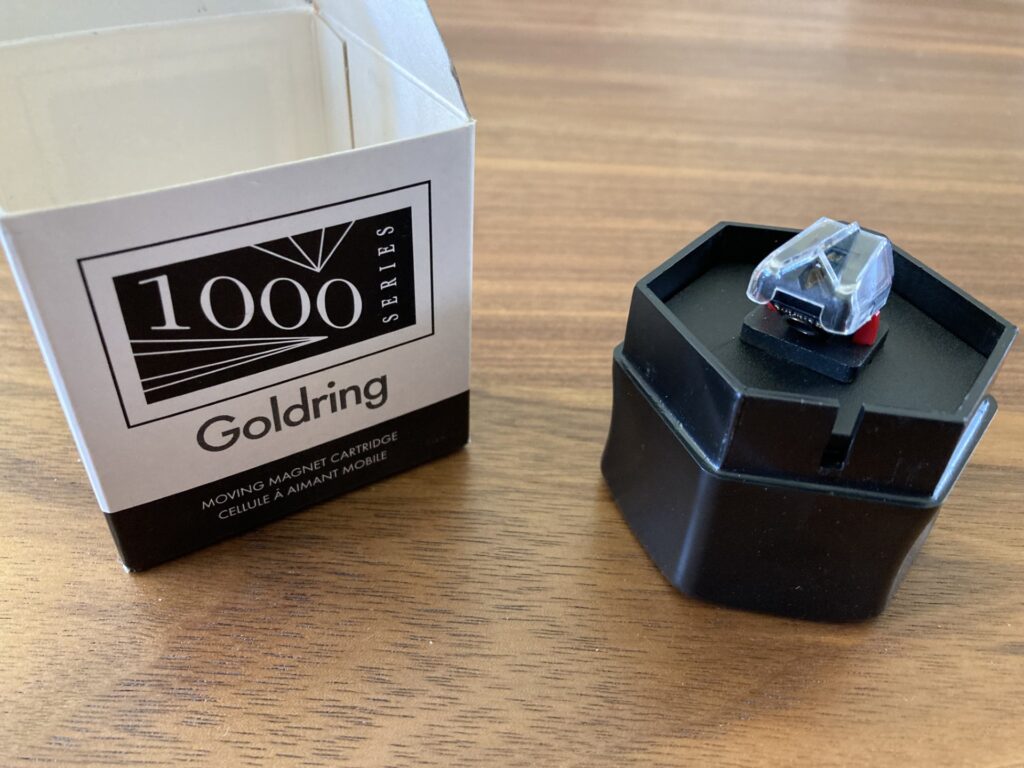
So here we have the $549 1012GX, with a nude Gyger II stylus: the first step up from the $399 entry-level 1006 using a conventional elliptical stylus, not that there's anything wrong with that. From there, the 1022GX and 1042 offer increasingly exotic, nude mounted styli at commensurately higher prices: $599 and $699, respectively. Frankly, $399 is steep for an entry-level model when Ortofon's 2M Red is just $99, which perhaps accounts for the 1006 being overlooked, but the higher models are in line with current pricing for competing models. And the styli are 100% interchangeable throughout the range: you can pop a 1042 stylus on a 1006, or vice versa.
I tried the 1012GX on a Music Hall Stealth (review forthcoming) and JBL TT350 (reviewed HERE). On both, the 1012GX is remarkably quiet, little to no groove rush, very low surface noise, and almost imperceptible sibilance in the rare instances where it even rears its ugly head. If that's your overriding priority, I can confidently say you probably won't do much, or any, better. (Assuming, that is, your records are in clean and in good condition. Otherwise, consider a less tenaciously resolving model because you will hear every imperfection with the same clarity as the music itself.)
Its notable quietness is probably why the already excellent dynamics get kicked up to another level, with satisfying blasts of bass drums and guitars savagely accelerating from seeming nothingness to instant-on power boost. As a result, the 1012GX compellingly approximates the excitement and electricity of a live performance. Eat your heart out, Dynavector 10x5.
Besides excitement, delicacy is also baked into the Jaffa Cake. It's not typical for an affordable moving magnet cartridge to combine startling energy and prodigious bass with such insight and listenability. Feed it solo piano or live bluegrass, and it also doesn't overemphasize or harden up. This cartridge manages to resist pulling any punches while diving deep into the kind of tonality, subtlety, and textural correctness you'd expect from pricier models. It's a ballerina who's also a weekend MMA fighter. It can play back Ozzy and Chris Thile with equal skill. The 1012GX is a little less full and generous than the E3, but where the E3 smears detail like a watercolor, the 1012GX resolves it like a 4K television playing a movie that was shot on film. So, if it occasionally sounds a tiny bit lean, or at least taut, it's because lesser cartridges sound paint in broader strokes, resolving music in chunks rather than razor-thin slices.
The leanness isn't from a lack of anything, but rather, it has more to do with the 1012GX's overall precision and definition. Precious little escapes this cartridge's firm control. A lot of this comes down to the choice of a nude Gyger II stylus: a tenacious detail retriever, but not so ruthlessly chiseled that it yanks information from the groove like a soulless, record playing microscope.
Of course, this means indifferently pressed records are exposed, and really poor recordings—especially those with compressed dynamics—have nowhere to hide, like seeing something ugly in the cold, clear light of day versus soft mood lighting. Might I suggest the outstanding Grado Opus3 (reviewed HERE) or Goldring's own E3 for those who find that too uncompromising? Or, hey, maybe give Goldring's 1006 a shot, especially if it offers the basic goodness of higher 1000-series models with a little more forgiveness and playfulness; you can always upgrade the stylus later on. Now, the 1012GX is hardly ruthless, but I can't overstate that those who have a lot of beater records and/or don't believe in record cleaning machines will have a lot of gunk to try and listen through.
Returning to dynamics, this is the one of the most talented cartridges I've yet heard for the price. You'll probably need to spend an extra $251 for that Dynavector 10x5 to equal or better it in this regard. I hate making these kinds of proclamations since so much depends on system matching, but okay, it's the best moving magnet I know of for this particular mission under $1000. If you like dynamic shifts that rattle, bass drums that hit hard, or brass instruments that explode from near silence, well, this is perhaps the least expensive way to get there.
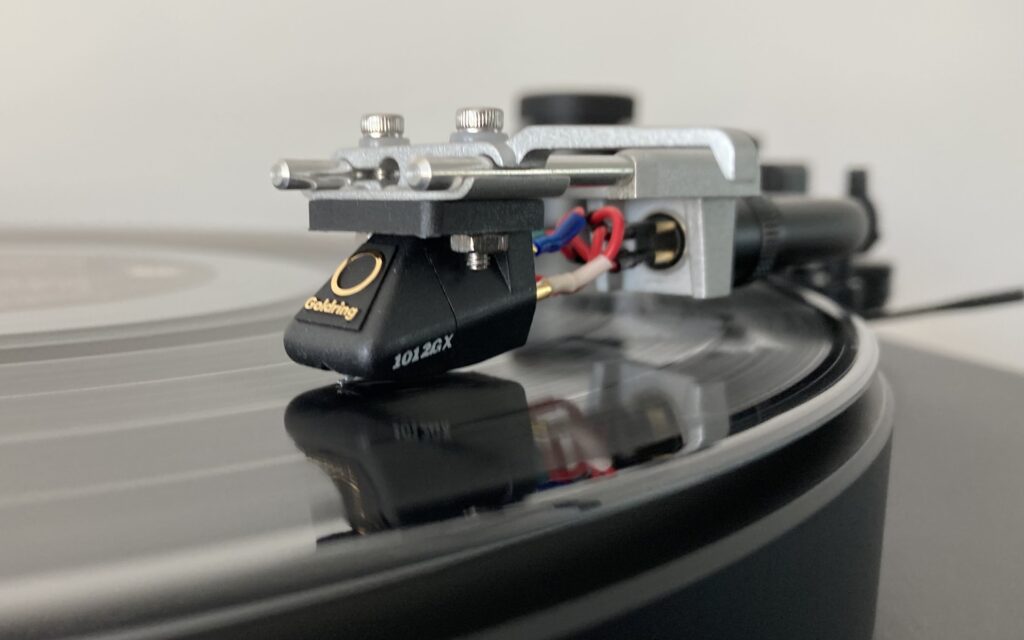
I was enjoying everything the 1012GX does so well, that it took me a while to notice what, to me, sounds like some relative lack of ambiance. Instrument placement is so precise and orderly that it tends to define the soundstage. Live recordings sound live more by virtue of, say, the effect of the venue on instruments than the actual air and space in the room itself. That's not to suggest that there isn't sufficient width or depth to the presentation. In fact, the 1012GX delivers commendable, though hardly perfect, front-to-back organization—a feat that eludes lesser moving magnet cartridges. It just seems to devote the majority of its energies to fleshing out instruments and voices rather than the physical space they occupy, which is hardly atypical of moving magnets when compared with moving coils. Just when you think you can have it all for $549…
Which brings me to my only real knock against the 1012GX: Goldring has seemingly made easier-to-mount versions of 1000 series models for companies like Audio Note, Roksan, and Linn, with captive screw threads. Why save such an important and beneficial feature for other companies' products? That would be like Ford building a better F-150 exclusively for Hyundai. In fairness, those cartridges from other manufacturers are/were generally priced substantially higher than the Goldrings on which they're based. So buyers do get a discount in exchange for a more fiddly installation process. Still, this isn't a cartridge that I'd be especially eager to mount on tonearms without removable headshells, unless I could easily remove the entire arm and work with it off the table. Getting the cartridge body affixed using the closed screw holes is a slight bugger. It's not a deal killer for me, but for people who talk about cartridge installation as though it's in the same league as colonoscopy prep, it might be.
Maybe my somewhat cold reaction to the 1042 was due to its more severe stylus profile: Gyger S vs the 1012GX's Gyger II. I remember it being even more refined and delicate, and technically very impressive, but less generous and full overall, and not especially dead-on suited for anything other than classical orchestras. I might feel differently now, but then again, maybe not. Over the course of decades, I've come to appreciate the more musical nature of less advanced stylus shapes, which tend to offer a little less focus on maximum information, but in return, deliver a more relaxing, absorbing and nourishing performance that's easier to sink into over the long term. It's not always the case, but when it is, you're getting more enjoyment for less money.
The 1012GX is otherwise very easy to live with. The cartridge's square-ish body makes it easy to rough in the alignment before fine tuning against the actual cantilever, which is nicely visible. The stylus unit goes on and off easily when it comes time for replacement. The medium weight and compliance make it compatible with a wide range of today's tonearms. Tracking was secure and vice free at 1.7-1.8 grams. It wasn't overly sensitive to VTA, though a little more attention than usual to azimuth is required for even channel balance. And, it's far more involving and less overtly cerebral than the more expensive 1042 if my memory of it serves. What's not to like? Yet…
I don't hear much chatter about the 1000 series nowadays, and that's a shame. This thing is state-of-the-art at its price point. Maybe my slogan Looks Old Fashioned, Sounds Awesomely Modern isn't such a crazy idea after all. The 1012GX's 1980s aesthetic perfectly suits throwback-styled tables like the JBL TT350, so just like clothing styles, if you wait long enough, everything comes back into style. Anyway, it's time for more people to discover, or rediscover, this cartridge, and probably the 1000 series as a whole. Other cartridges offer their own unique set of virtues, but it simply doesn't get much better overall than this for $549. Don't change a thing, Goldring. (Hey! That's a pretty good slogan too.)
Specifications
- Frequency Response: 20Hz - 20kHz +/- 3 dB
- Channel Balance: within 2 dB @ 1kHz
- Channel Separation: better than 25 dB @ 1kHz
- Sensitivity: 6.5 mV +/- 1.5 dB, 1kHz @ 5 cm/sec
- Static Compliance: 24 mm/N (lat); 16 mm/N (vert)
- Equivalent tip mass: 0.45 mg
- Vertical Tracking Angle: 24°
- Stylus Radius: Gyger II
- Stylus Type: Replaceable
- Load Resistance: 47 kΩ
- Load Capacitance: 150 - 200 pF
- Internal Inductance: 570 mH
- Internal Resistance: 660 Ω
- Cartridge Mass: 6.3 g
- Cartridge Mass (inc. fixings): 7.6 g
- Fixing Centre: 0.5" (12.7 mm)
- Playing Weight: 1.5 - 2.0 g (1.7 g nom.)
- Replacement Stylus: 1012GX - D12GX
1012GX Cartridge
Retail: $549
Goldring USA




